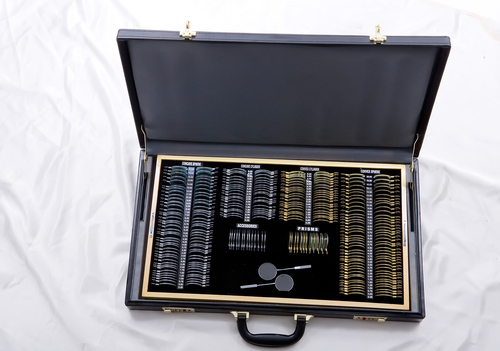Trial Lens Set
Product Details:
- Color Golden & Silver
- Lens This is a kind of semi transparent cover lens and mainly used for babies or used outside of the room as anoccluder
- Product Type Optical Lens
- Material metal
- Click to View more
Trial Lens Set Price And Quantity
- 18000 INR/Piece
- 1 Piece
- 17500.00 - 18000.00 INR/Piece
Trial Lens Set Product Specifications
- Optical Lens
- This is a kind of semi transparent cover lens and mainly used for babies or used outside of the room as anoccluder
- metal
- Golden & Silver
Trial Lens Set Trade Information
- 2 Piece Per Day
- 7 Days
- Yes
- Australia Eastern Europe Africa Middle East South America Western Europe Asia Central America North America
- All India
Product Description
Trial Lens Set
Spheres
The curved surface forms a part of the spherical lens and the diopric power on alll axis positions is the same. After passing the lens, the light beam focuses in one point ( or a virtual focus ). Spherical lens includes concave lens ( - ) and convex lens ( + ) which are used to examine myopia, hyperopia and presbyopia.
Cylinders
The curved surface forms a part of cylindrical lens and the dipodic power on all axis positions is not the same. After passing the lens, the light beam focuses into a straight line ( or a broken line ). Cylindrical lens consists of concave cylindrical lens and convex cylindrical lens that are used to examine astigmatism.
Prisms
The tangent plain of prismatic lens shows cuneiform. After passing the lens, the light beam bends to the bottom and the object shifts to edges. This kind of lens is used to test eye-flesh, slant and invisible slant as well as to train eye-flesh.
Occluder
This is a kind of opaque lens for covering the uninspected eye of the examinee in a dark room.
Frosted lens
This is a kind of semi transparent cover lens and mainly used for babies or used outside of the room as anoccluder
Slit
In its center, there is a split, through whish light beam can psaa while it cannot pass the other part of the lens. By turning this lens in front of the eye, astigmatism can be examined as your vision changes in better or in worse at a certain axis position, on the contrary, it proves no existence of astigmatism if your vision has change.
Plane Lens
This is a kind of transparent plain lens and the light beam never bends when it passes the lens. It is used to examine false blindness.
Color Lens
This kind of lens has different colors, red, green, blue, yellow and dark brown and is used to examine color sensitivity. To such person whose dipodic image is muddy ( e. G a patient with cataract ), the red or green lens is suitable, it also can be used for re-inspection and examination of color blindness.
Maddox
On its surface, there is one row of bars which point light can pass, and then bends into a line to the direction, which is perpendicular to the glass bars.
Pin Hole
In its center, there is a small hole, through which light beam passes to form artificial pupil and it is used to improve diopter especially the astigmatism after wearing it.
Specification:
- 266 pcs
- 232 pcs
- 225 pcs
- 158 pcs
- 103 pcs

Price:
- 50
- 100
- 200
- 250
- 500
- 1000+













 Send Inquiry
Send Inquiry Send SMS
Send SMS